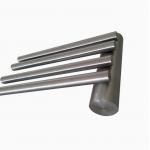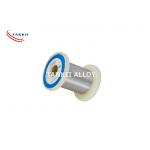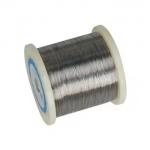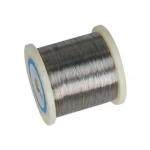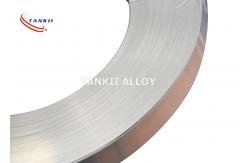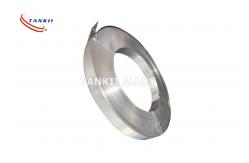CuNi44 Constantan Resistance Copper Nickel Alloy Strip Resistance
Tape
Constantan
Resistance alloy with moderate resistivity and low temperature
coefficent of resistance with a flat
resistance/temperature curve over a wider range than the
"manganins". Constantan also shows better corrosion resistance than
the manganins.
Uses tend to be restricted to ac circuits. Constantan is also the
negative element of the type J thermocouple with Iron being the
positive; type J thermocouples are used in heat treating
applications. Also, it is the negative element of the type T
thermocouple with OFHC Copper the positive; type T thermocouples
are used at cryogenic temperatures.
Chemical Content, %
| Ni | Mn | Fe | Si | Cu | Other | ROHS Directive |
| Cd | Pb | Hg | Cr |
| 44 | 1.50% | 0.5 | - | Bal | - | ND | ND | ND | ND |
Mechanical Properties
| Max Continuous Service Temp | 400ºC |
| Resisivity at 20ºC | 0.49±5%ohm mm2/m |
| Density | 8.9 g/cm3 |
| Thermal Conductivity | -6(Max) |
| Melting Point | 1280ºC |
| Tensile Strength,N/mm2 Annealed,Soft | 340~535 Mpa |
| Tensile Strength,N/mm3 Cold Rolled | 680~1070 Mpa |
| Elongation(anneal) | 25%(Min) |
| Elongation(cold rolled) | ≥Min)2%(Min) |
| EMF vs Cu, μV/ºC (0~100ºC) | -43 |
| Micrographic Structure | austenite |
| Magnetic Property | Non |
Application:
CuNi44 is a copper-nickel alloy that contains specific minor
amounts of additional elements to achieve precise values for the
temperature coefficient of resistivity. Careful control of melting
and conversion practices results in a very low level of pinholes at
ultra-thin thicknesses. The alloy is used extensively for foil
resistors and strain gauges.

